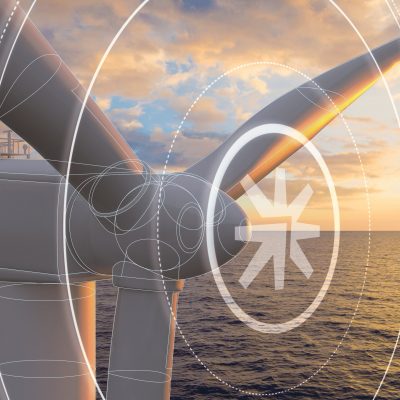Alternative opportunity for marginal developments explored through gas to wire study by OREC
Project Summary
Significant gas reserves in small reservoirs spread across the North Sea are often uneconomic to bring to shore. With increasing extraction costs and declining prices, industry is looking for new ways to extract gas in a cost-effective way, particularly techniques that support decarbonisation using renewable energy. Gas to wire (GTW) exploits stranded gas assets by using nearby offshore wind farm infrastructure to export power directly as electricity to the grid. GTW has the potential to completely change the economics for developing marginal fields. The concept is in its infancy, and not widely investigated.
Offshore Renewable Energy Catapult (OREC) undertook a high-level economic study to determine the viability of gas to wire along with examining the rationale for completing an in-depth phase two feasibility study, on behalf of NZTC. The study, based on real UKCS oil/gas and offshore wind field development data, investigated the economic feasibility of exporting power from a marginal oil and gas development to the national grid via an offshore wind farm.
Industry value:
Gas to wire has the potential to completely change the economics for developing marginal fields, particularly when looking at integrated energy systems as part of the journey to net zero.
Key results:
OREC built a cost model, which generated incremental economics – from both the gas developer and wind farm developer perspective – for exporting stranded gas reservices as electricity via offshore wind substations. Base case scenarios assumed gas platforms situated 5km from the offshore wind substation in similar site conditions to the wind farm. Three scenarios were modelled to reflect high, medium and low case for the gas developers.
The economic analysis identified the biggest cost drivers related to revenue opportunity – namely the electricity market rate and the capacity the gas turbines can operate, maximising gas turbine output was deemed a priority.
CAPEX savings are achievable if synergies in engineering, management, procurement and construction are considered. Platform installation may also offer savings depending upon vessel specifications. Significant OPEX savings are also achievable if the operating and maintenance strategies can be aligned with the wind farm. The study identified that the opportunity exists to use gas to wire methods to develop marginal fields, but the challenge lies in the unique nature of each field and the number of different factors that influence the economic viability. Each would have to be judges on their own merits; however the development of a flexible economic model could make the estimated viability more accurate.
As these concepts were at an early stage of development when the study was performed, there is uncertainty attached to the estimated costs. Aspects such as weather conditions, water depth and distance to shore for each site can have considerable impact on the cost of offshore transmission and thus the attractiveness to a developer considering pursuing a project.
There are several additional external factors that need to be considered before forming a firm commercial case, these include:
- Instigating talks with offshore transmission owner (OFTO) and OFGEM
- Reviewing technical ability of gas turbine to adjust output when wind farm is operating at maximum capacity
- Understanding where metering points will be stationed and how losses will be distributed to owners
- Understanding how risk will be apportioned and the risks in this type of infrastructure
- The ability to switch the direction of power to deliver power to the gas platform for generator start-ups and potentially platform decommissioning
- Opportunities to retrofit existing offshore wind developments to accommodate export from nearby gas resources through substation upgrades and/or replanting
- Considering alternative technological solutions
- Recognising priority areas for innovation to improve the solution or generate future cost reductions
The phase two – producing a more detailed feasibility study – has not yet commenced. The gas to wire concept has the potential to attract more interest as part of net zero plans and developing an integrated energy system offshore.
Lessons learned:
Using the defined site parameters, the economic benefit of connecting in a gas turbine is subjective and highly dependent on the developers’ expectation for return. The payback term for the gas to wire development is 14 years, which is long term for a 25-year investment.
Let's work together
"Required" indicates required fields
